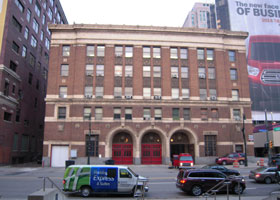![]()
安全面において自動車メーカーにとってまだ競争の余地のあるエリアはなんでしょうか?

Detroit / USA
競争できないエリアなどあるでしょうか。
私にとって重要な事は車両安全基準やNCAPプログラムなどを「天井」ではなく「床」、特に安全基準に関しては必要最低条件である、と見るべきだということです。
最終的には安全は大いなるセールスポイントであります。
消費者はエアバッグの有無だけでなく、エアバックがいくつ自分のクルマに付いているかを問います。
エアバッグにしろ、エアバッグのデザイン、クラッシュ回避技術、安全基準5☆達成にせよ、安全面に関して自動車メーカーが互いに競い合っていないようなところはひとつも無いと思います。
安全面でのマーケット・リーダーとしての地位を築くべく努力しています。
ここでは、特にNCAPのようなプログラムで我々が基準を設定し、競争条件を提示することができます。
消費者がベストの情報を得るために、情報を消費者に提供するのです。
そしてマーケットでは互いに競いあうようになるでしょう。
アクティブ・セーフティにせよパッシブ・セーフティにせよ、もっと業界が競い、改善する余地があると思います。
誤解のないように言いますが、大きく進歩はしています。
しかし、アメリカ国内で年間3万人以上という死亡者の数は、我々ができうる全てを尽くして車両、規制、人間の行動などを改良・改善してこの数字を少なくしなくてはいけないということを明らかに示しています。
主要技術に関してオプショナルなのもから標準装備への移行を加速するための最善の戦略は?

Detroit / USA
我々の仕事はオプションに対して標準装備のテクノロジー云々ということではなく、人の命を救い、怪我を回避することです。
ですから、このような枠の中でこの質問に答えるのは難しいですね。
というのも我々が行うテストは、A、B、Cといったテクノロジーがどのようなレベルのものか、を測るのではありません。
それはむしろ、我々がきちんと仕事をした時に結果として出てくるものなのです。
消費者に最善の情報を提供したり、テクノロジーを必要として市場での競争を奨励したりするための様々なツールを我々は持っています。
しかし、最終的には何かをオプションから標準装備に移行するべきかどうかということよりも、人命を救い、怪我を少なくするための適当なテクノロジーであるかどうか、ということです。
US NCAPの5年後をどのように見ますか?
5年後にもNCAPは消費者の安全に関する重要な情報源の一つであり続けていたいと思います。
カーメーカーには5☆安全基準をクリアした商品をたくさん提供することを競い合い、自慢してほしいと希望します。
メーカーには我々が提示する新しいテクノロジーを見てもらって、消費者に提供するように奨励してゆきたいと考えます。
一方で、業界にとってある程度の不動性、そして確実性が必要なことは明らかです。
NCAPの一部としてどのような標準を設定しているかを、業界の人々が知ることができるようにしておかなければなりません。
しかし同時に、NCAPのプログラムは進化し、改善されてゆかなければならないでしょう。
例えば現在テスト中のある衝突問題に対処するために、最近サイド・ポールテストを加えました。
またESC(electronic stability control)は今や標準装備となっているので外し、バックの際の事故を防ぐための後方可視カメラ(rear visibility camera)をNCAPに加えました。
このように進化をし続けるのです。
事実、様々なコメントを受けて5年戦略計画を発表することになっています。
その計画が目標とするのはこの両方を達成すること、すなわち業界にNCAPプログラムの方向性に対する確実性を示し、理解を得ること。
そしてその中には、当局は進化し続け、消費者の命を救い、衝突から自らを守るための最善の選択肢を提供しつづけるということを理解してもらうことも含まれます。
In what areas of safety can vehicle manufacturers still compete?

Detroit / USA
Where can't they compete? One thing that's important to me is you shouldn't look at vehicle safety standards, or the NCAP program, or any of these things as a ceiling. These are floors. Especially with safety standards these are the minimum requirements. At the end of day, safety sells. You see consumers asking not only whether or not they have airbags, but how many air bags they have in their cars. Whether airbags, design of airbags, crash avoidance technology, or achieving five star safety rating, I don't think there's any facet of vehicle safety where you don't have automakers trying to outcompete themselves, trying to create a market for themselves as safety leaders. This is a place where, especially with programs like NCAP, we can set the bar, set the terms of competition, get the information out there for the consumers so they have that best information. And the market can compete and hopefully try to outdo each other. So I don't think there's any part of safety, whether active or passive, where we can't see more competition and more improvement from the industry. There's been huge strides, don't get me wrong, but there are still over 30,000 highway fatalities a year [in the United States], that's a clear signal that we've got to do everything we can to keep pushing those numbers down, improve on the vehicle side, improve enforcement and improve behavior.
What is the best strategy to accelerate the move from optional to standard equipment for key technologies?

Detroit / USA
I wouldn't say we are in the business of focusing on optional vs. standard technologies. We are in the business of saving lives, of preventing injuries. And so it's hard for me to answer that question in that frame because our test is not whether or not technology A, B or C is out there at what level, that's more what happens if we're doing our job well. We have a whole host of different tools whether it's giving consumers the best information to help encourage competition in the marketplace, or requiring technologies. At the end of the day, it's really less about do we have to move something from optional to standard - it's do we have the right mix of technologies out there to continue saving more lives and reducing injuries.
How do you see US NCAP in five years?
When I look at NCAP, to me, in five years I want it to remain as one of the preeminent sources for consumer safety information. I want automakers to be competing with each other, to brag about how many vehicles they have with five star safety ratings. I want automakers to look at new advanced technologies we're listing there and to be encouraged to make them available to consumers. Obviously, on one hand we need a certain level of stability and certainty for the industry. They need to know what the bar is that we are setting as part of NCAP, so we do need a certain level of stability but the program also needs to evolve, to improve.
Not too long ago for example, we added a side pole test because we knew we needed to address one of the crashes [we were not then] testing for. We recently took out electronic stability control, because that's now required, and we are putting in rear-visibility cameras [in NCAP] to help avoid back-overs. It's gong to continue to evolve, in fact we've been taking comments and we are going to be putting out a five-year strategic plan. And the goal of that plan is to do both of these things, to give industry some certainty and some understanding of where the program is going and part of that certainty and understanding is that we keep evolving, keep giving consumers more and more information about the best options to save lives to protect themselves from crashes.